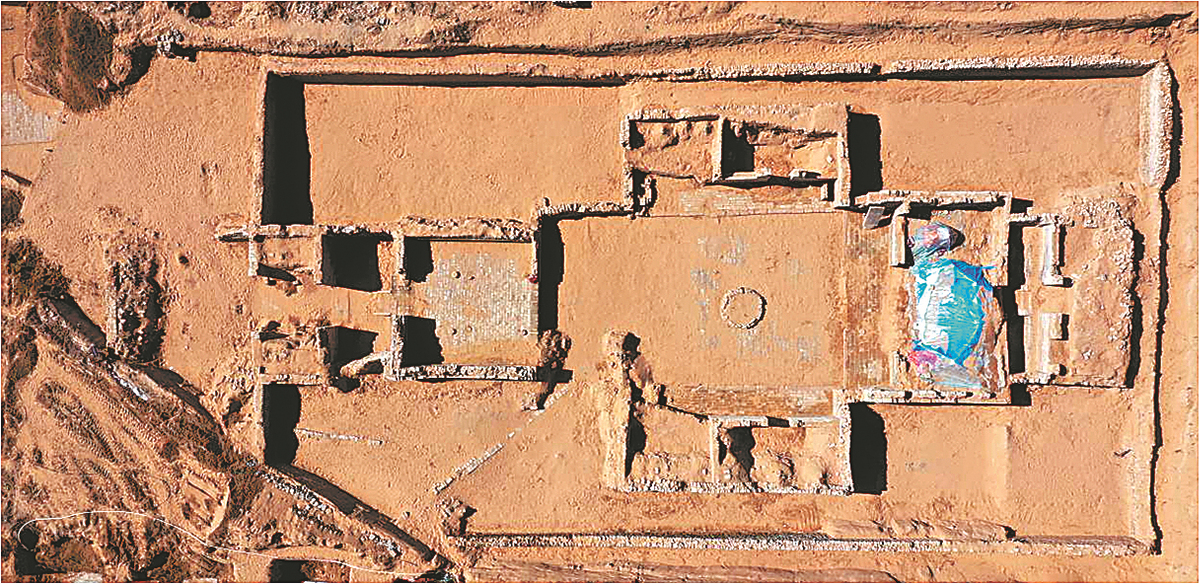
Conservation work produces rich rewards for archaeologists
Time has taken its toll on the Jiankou section of the Great Wall in Beijing, which was constructed after emperors in the Ming Dynasty (1368-1644) issued orders for their land to be defended against nomadic people to the north.
The structure once towered over cliffs in what is now the city's Huairou district, but over the centuries its fortified watchtowers were eroded by the weather. Water seepage and heavy vegetation also damaged the wall.
Known for its rugged beauty, Jiankou, which in Chinese translates as "arrow's notch"-the end of an arrow that rests against the bowstring-has a reputation for being the toughest section of the Great Wall in Beijing to climb.
In 2018, a conservation project was launched in Jiankou to prevent loose parts of the wall from collapsing. For Zhang Jianwei, an archaeology professor at Peking University, this was a precious opportunity to view the structure at close quarters and delve into its history.
During the past three years, Zhang's team has carried out archaeological investigations on an 800-meter-long section of the wall in Jiankou, including four watchtowers.
The team divided this section into 25-square-meter excavation units and has conducted detailed research in each one. Bricks and stones that have fallen from the wall are carefully cleaned and scrutinized before being returned to the structure after restoration work.
Zhang said, "Cultural heritage has its own life. Each renovation project over the years has been an 'intervention' in the wall's life, providing crucial information.
"As we have had to intervene in its life again through this ongoing project, it's essential to first decode the information through our work as archaeologists. We can then understand how the wall's original appearance has changed and also gain an insight into its present condition. This will greatly help with conservation work.
"We've basically figured out how the watchtowers were constructed, used and became damaged. This has provided key clues for our architectural studies."
The conservation project has also been helped by a new digital surveying platform that analyses aerial photographs of the site.
"Through digitization, conservation can be managed and evaluated with a more scientific approach. To a large extent, scattered bricks and stones that have been unearthed can be recycled for the restoration work."
The material used to construct the wall has been retained as much as possible, and a principle of "minimum intervention" was adopted for the project, Zhang said.
Shang Heng, a researcher at the Beijing Archaeological Research Institute, said the 520-kilometer-long section of the Great Wall in Beijing passes through six districts along the Yan mountains. A small part of the structure dates to the 6th century, but most of it was built during the Ming Dynasty.
The watchtowers and lower stones were put in place in the 14th and 15th centuries, particularly during the reign of Emperor Yongle, who moved the national capital from Nanjing, in what is now Jiangsu province, to Beijing.
Reinforced brick walls were not erected on a large scale until the mid-16th century, during the reign of Emperor Jiajing. The structure's defenses were further strengthened during the reign of Emperor Wanli (1573-1620), when the Jiankou section was built.
Zhang Zhonghua, deputy director of the Beijing institute, said, "Studying archaeology on the Great Wall is an interdisciplinary program that also involves studies of ancient architecture and the surrounding environment.
"These studies enable us to figure out the type of risks that threaten the stability and safety of the wall, helping us draft plans to prevent potential threats," he said.
